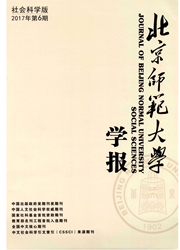

 中文摘要:
中文摘要:
透过中关贸易差额的表象,不难发现,中美贸易额的流向与贸易利益的流向并非一致,而后者对一国的福利改善和经济发展似乎更具有战略意义。因此,中方名义上的贸易顺差或许并不能真实体现其在中关贸易中的获利水平,而身处价值链高端和贸易逆差的美国反倒更可能利用技术优势和优越的分工地位获得大量的贸易利益。那么,在全球生产分割盛行和工序分工深化的背景下,两国中间品贸易中是否同样存在以资源和环境为代价换取的名义贸易顺差与实际贸易利益的背离?而这其中分工和生产率又对中关中间品贸易失衡产生何种影响?通过中关19982010年31个细分行业和分产品部门的面板数据的实证研究发现:(1)中关贸易额与贸易利益流向的背离是两国中间品贸易利益失衡的主要特征;(2)工序分工地位和生产率水平的差异所驱动的行业比较优势的不同,促使美国凭借技术优势和有利的分工地位占据着价值链的高端,而中国更多处于工序加工和装配的中间环节,对这种劳动密集型比较优势的依赖显然在一定程度上扭曲了国内的产业结构,加剧了两国中间品贸易失衡;(3)生产率和工序分工对不同产品部门的影响并非一致,二者对劳动和资源密集制造部门与技术、资本密集制造部门解释力的差异,凸显了国内产业向劳动和资源密集制造部门收敛的趋势与传统加工贸易模式的固化。对中国而言,上述发现的政策含义有三点:其一,应注重生产率水平的内在提升和动态比较优势的培育;其二,要重视高技术工序承接带来的技术外溢和产品部门结构调整驱动的贸易发展方式转变;其三,应关注贸易保护主义倾向对中关中间品贸易失衡的影响。
 英文摘要:
英文摘要:
This paper introduces the productivity heterogeneity into the analysis framework of task trade, expands the existent research from the imbalance of trading structural and trading interests perspective, and explores the internal logic that the task division of labor and the productivity heterogeneity have influenced intermediate goods trade imbalance. An em- pirical study of the 1998-2010 China-US 31 industry segments and product sectors panel data has found that trade deviation from the flow of trade interests are the main features of the bilateral intermediate goods trade imbalance. The deepening of task labor division promotes significantly the export of intermediate goods in each sector, but the productivity levels have a negative correlation with them. This confirms that the China-US intermediate goods trade has structural imbalance, and hence suggests the policy implication.
 同期刊论文项目
同期刊论文项目
 同项目期刊论文
同项目期刊论文
 期刊信息
期刊信息
